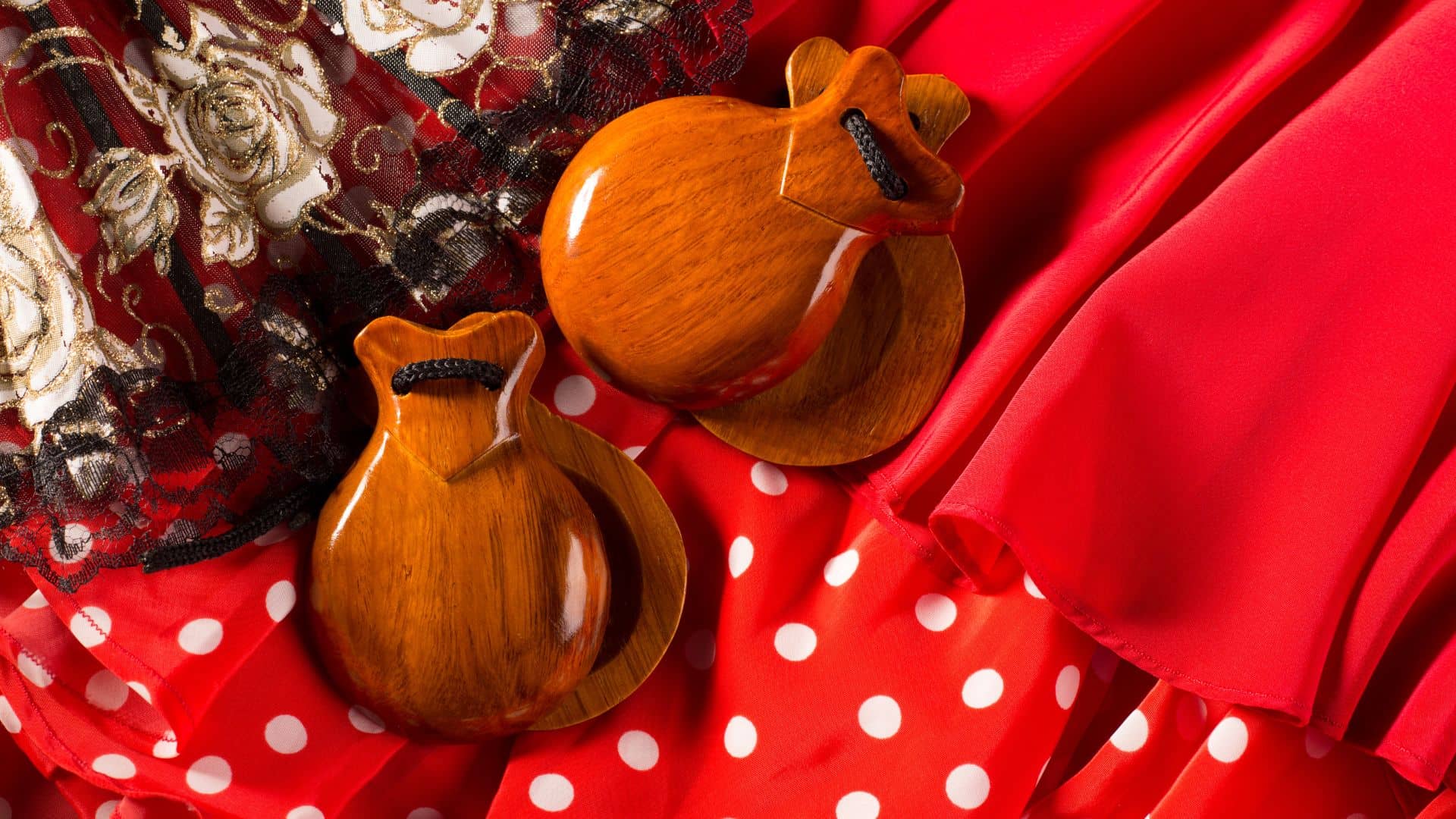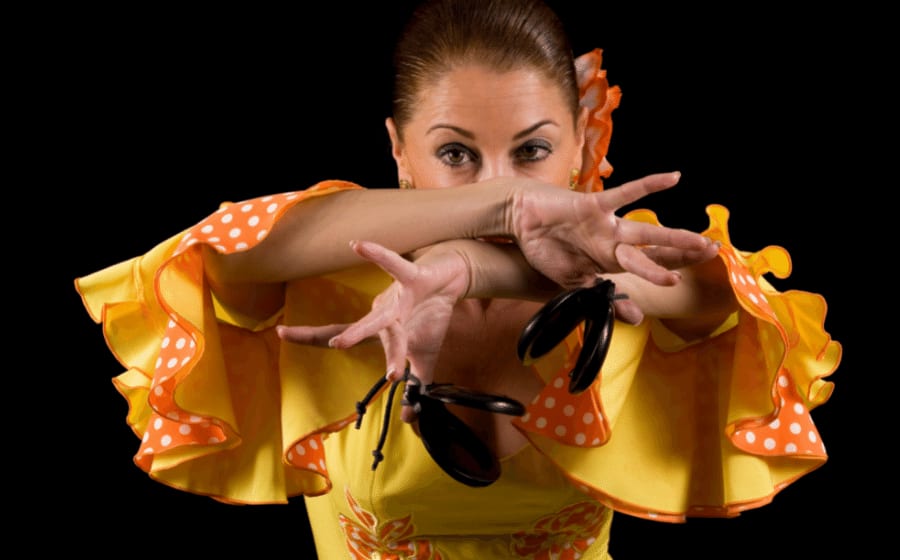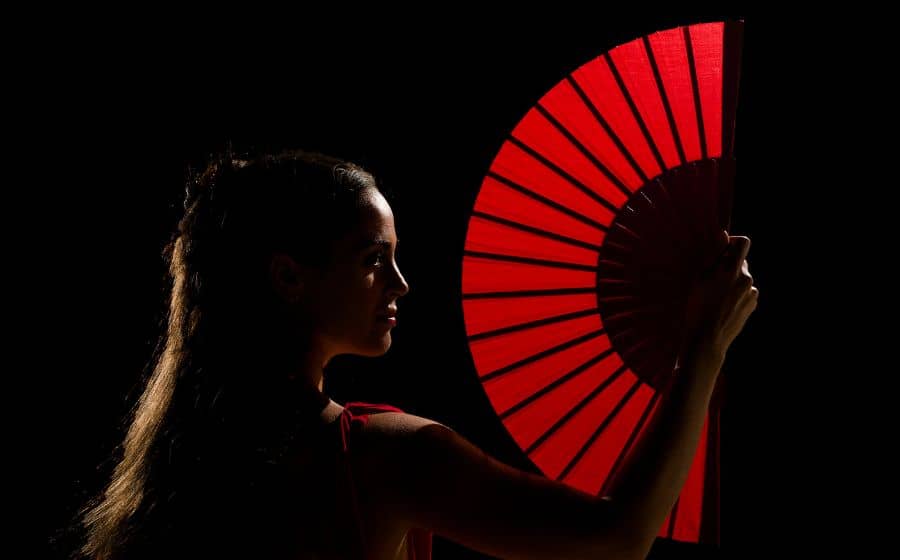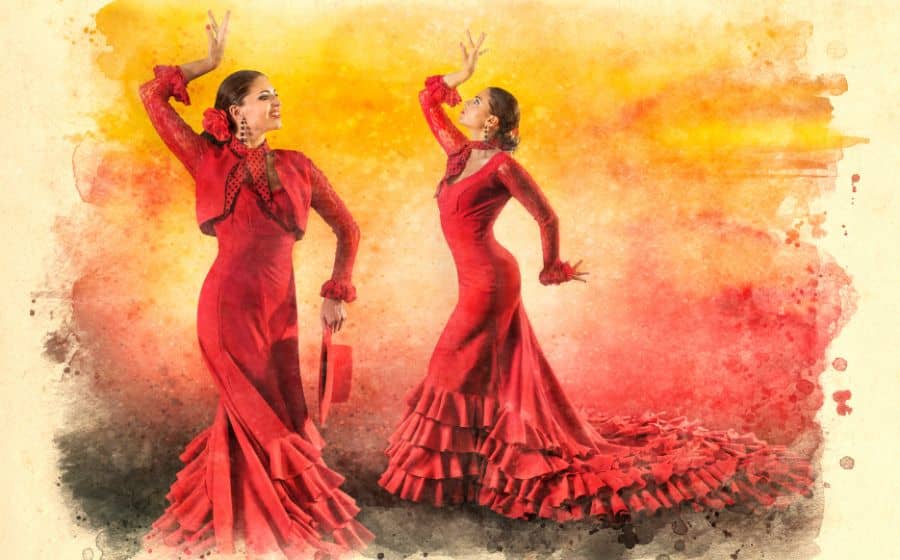5 Flamenco Instruments That Are Unique in The World
October 22, 2022
Win a FREE Trip to Spain!
Exciting Announcement! For the first time, we're thrilled to offer exclusive trips to the heart of Spain - an experience like no other. This isn't your typical tourist journey; it's a unique opportunity to immerse yourself in authentic Spanish culture, alongside real locals and our passionate team.
But there's more! Simply by requesting information about this amazing trip, you'll be entered into a special draw to win a Fully Paid Trip to Spain for Two. And that's not all - everyone who inquires will receive an exclusive bonus gift, valued at $500, available only now.
Ready to Discover the Real Spain?Click Here ↑ to Request Information & Enter the Draw!
There are some sounds that are unmistakable and when we hear them we associate them directly with the art of flamenco. Do you know any of them?
The sound of the guitar, the clash of castanets, the loud “zapateado” against the floor or the rhythm of “palmas” are always present in any flamenco show. These are instruments that have been introduced little by little over the years and have become key elements of flamenco.
The combination of all of them creates a spectacular atmosphere and excites anyone who listens to it!
The original flamenco consisted only of the singer’s voice accompanied by the sound of clapping. But today there’s no flamenco “tablao” without these instruments accompanying the dancing and singing.
Do you want to hear the sound of these instruments and see how they give a special and magical touch to our beloved flamenco? Let’s do it!

Table of Contents ▼ ▶
The Flamenco Guitar

The guitar is undoubtedly the instrument that revolutionized flamenco art.
The guitar is a stringed instrument and was the second musical element to accompany flamenco singing after the clapping. Little by little, the guitar became a reference in this art, and today it’s a must!
Apparently, and according to several studies, it was in the mid-nineteenth century when the guitar joined flamenco, coinciding with the moment of fame of the flamenco “tablaos.” However, the exact time is not known.
The guitar began to be of great help for the flamenco “palos” (styles) to have a structure and to facilitate the entrances and exits of the singing.
I don’t know if you know it, but the flamenco guitar is a variant of the Spanish guitar and is the most popular in and out of Spain. Although the difference between the flamenco guitar and the classical guitar is that the flamenco guitar weighs less and is smaller.
When the guitar and flamenco come together, you can experience real magic!
The “Cajón”

I love this instrument, and it makes me want to play it whenever I hear it! It gives flamenco an incredible rhythm!
Its sound is very particular and gives a lot of personality to the flamenco performance.
The combination of the “cajón” with the accompaniment of clapping “palmas” or the “taconeo” creates a unique atmosphere and gives everyone goosebumps!
We owe the incorporation of this instrument into Andalusian art to the famous Paco de Lucia. One of the best flamenco artists in history and an excellent reference for many.
If you want to know more about Paco de Lucia and other icons of Spanish flamenco in our country, you have to read the article: 7 Flamenco Artists to Bring Out Your Most Passionate Side
In 1977, when Paco de Lucia was on a musical tour in America, more specifically in Peru, he discovered the “cajón.” The sound caught his attention so much that he wanted to make an accompaniment with the guitar. The mixture of the two was absolute madness! It was the perfect combination with a more consistent rhythm.
The “cajón” blends perfectly with the percussion of flamenco and the rest of the instruments that accompany the dance, giving it a unique touch.
Nowadays, a flamenco performance without this instrument wouldn’t be the same! You would have the feeling that something is missing.
The “Castanets”

The chiming of the castanets is another of the characteristic sounds of flamenco. This instrument is also called “palillos” and is considered an identifying element of Spanish Flamenco music.
The sound of the castanets is exquisite and gives an extraordinary touch to our music. They are also part of the cultural heritage of Spain.
The castanets are round and hollow and are usually made of wood. But over the years, they have been made with other materials such as pressed cloth or fiberglass. The “palillos” are joined by a string, and when they strike each other, they produce a sound very different from the rest of the instruments. If you have never heard it before, you will be surprised!
Keep in mind that the castanets are not the same! Depending on their sound, they go in one hand or another. The one with a higher pitch is called “hembra” (female) and is placed in the right hand. And the one that marks the rhythm is called “macho” (male) and goes in the left hand.

It seems that the invention of the castanets is attributed to the Phoenicians. They were the ones who created the first wooden “palillos” more than three thousand years ago!
Little by little, castanets spread throughout the Mediterranean, especially in Italy and Croatia. But in Spain, they acquired great importance and began to be used as part of the art of flamenco.
The castanets have been used in other styles of Spanish music. They have been one of the oldest percussion instruments that have survived over the years. They’ve become a symbol of flamenco in our country.
This particular instrument is usually played by female dancers. They may seem easy to play, but playing them is a real challenge! Even putting them on is not easy at all! It requires a lot of practice and coordination as you have to use both hands and intersperse sounds.
I encourage you to try it and send us a video!
The “Palmas”

The “palmas” are not an instrument as such, they are not like the guitar, the “cajón” or the castanets, but they are a crucial element for flamenco.
In fact, they were the first element that accompanied the singing!
Without the “palmas,” flamenco would not transmit the same feeling; it would lose an essential part of its essence. They are a rhythmic accompaniment to the dancing and singing. And I can tell you that being good at it’s not easy!
If you haven’t heard flamenco before, you should know that the “palmas” follow a constant and rhythmic beat but that they vary depending on the flamenco “palo” (style) they accompany. Although some flamenco styles don’t have them, such as the natural “fandangos” or “tonás.”
Besides being a percussion accompaniment, the “palmas” mark the rhythm and accentuate each “palo” compass. They also serve to animate the flamenco artists during the show.
Learning to play the “palmas” well and to accompany the dance, the singing, and the other instruments requires a lot of practice and discipline. People who play the palmas are known as “palmeros.”
There are two “palmas,” known as “Palmas Sordas,” which we will accompany the singing at a party. And “Palmas Abiertas” are executed by cupping palm against palm so that the sound is more muffled (more profound). It’s very easy to lose the rhythm, so you must be careful not to slap too soon or too late!
The “Zapateado”

The “zapateado,” like the “palmas,” is not a musical instrument but also part of the percussion of flamenco. It’s an essential element of flamenco!
The sound emerges from the tapping of the shoe by the dancer against the floor. It’s a rhythmic combination of sounds combining the toe and heel of the shoes. You could say that art arises from the movements and sound the artists make with their feet. The “zapateado” is done with strength, desire, and passion. It’s a way to mark the rhythm and join the rest of the instruments.
The “zapateado” is very present in flamenco. You can enjoy this technique in almost any flamenco show you go to!
I think it’s vital for you to know that the first thing that appeared in flamenco was the singing, then the clapping “palmas” and the guitar were added. And finally, dance was incorporated, which at the beginning consisted only of tapping the feet. Later, the “cajón”, the castanets and more body movements like the “zapateado” were integrated, which are the ones we know today.
What do you think of these musical elements? Did you already know any of them? If you haven’t seen a live flamenco show, this is something you have to experience! The mix of all these instruments is impressive!!
So… See you at the next flamenco show?












